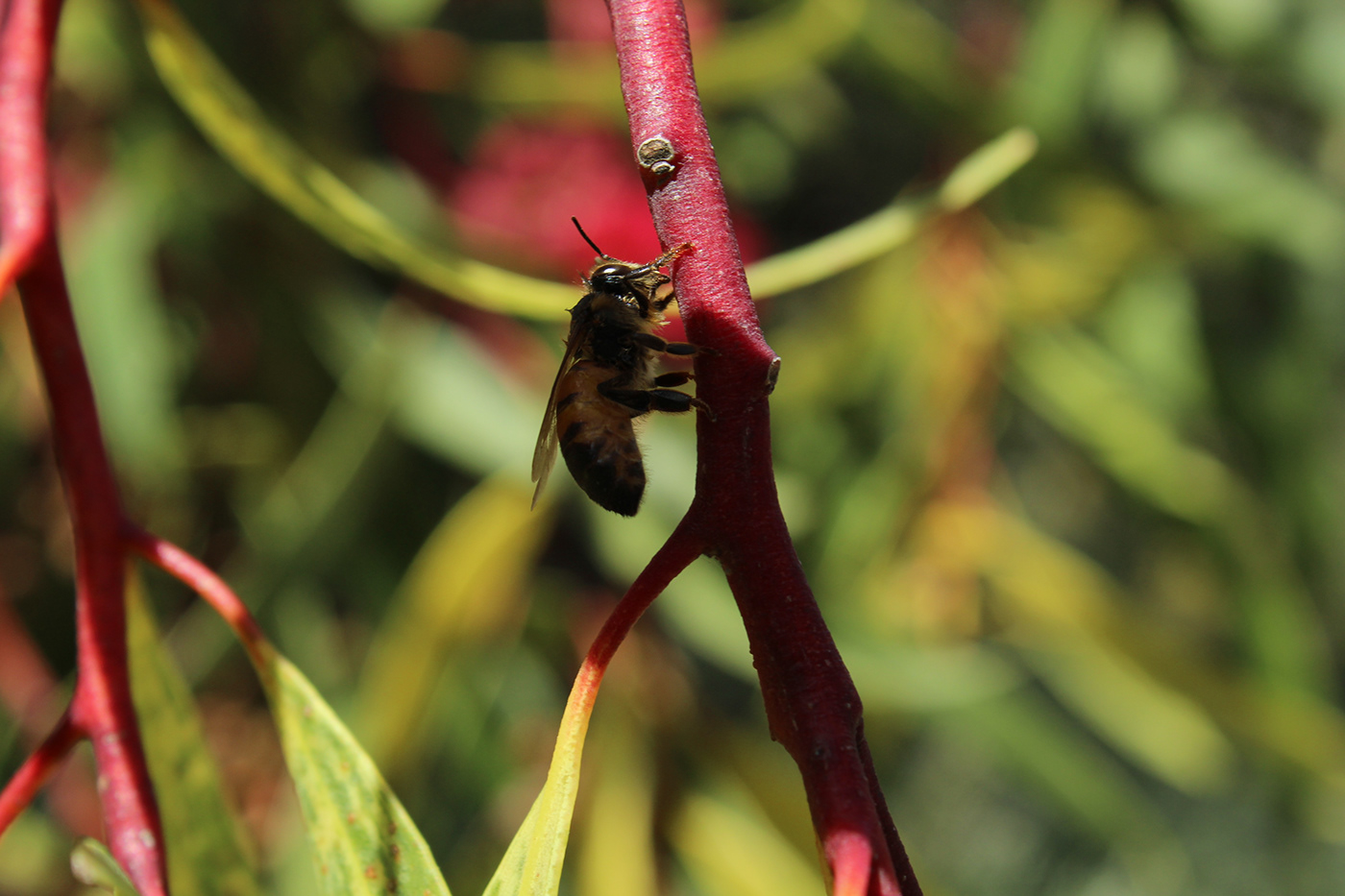The Interconnected Effects Between Man and Nature:
The Dwindling Population of Bumblebees within North America
Sage Speich
Department of Graphic Communication, California Polytechnic State University – SLO
GRC 301: Digital Photography and Color Management
Professor Hocheol Yang
The Problem:
The balance between human and nature has always been a delicate and difficult scale to keep in a harmonious equilibrium; These days, the dominance of human life around the world and the societal drive to achieve a fulfilling life in a quick and easy manner has disrupted such balance, and leaves many contributors in the natural cycle of life severely threatened by our environmental choices. Bumblebees within North America have found it extremely difficult to maintain a healthy lifestyle that they can focus on pollinating the planet, and instead are left for fight for their own existence.

Bee resting on red stem.
The Facts:
According to National Geographic, the numbers of bumblebees within North America have severely plummeted over the years, with the given individual "nearly 50 percent less likely to see a bumblebee in any given area ... prior to 1974" (Main, 2020). There are many factors that contribute to this decline. One of the most prominent factors is the rapid adjustment of climate change within a given area; This change brings about "an increasing number of days with extreme heat ... [which] is increasing local extinction rates, reducing colonization and site occupancy, and decreasing species richness within a region" (Soroye et al. 2020). In addition, the bumblebees are being affected by other direct and indirect actions that we participate actively in, such as "pesticides, pollutants, parasites, diseases, and malnutrition" (Klein et al., 2017).

Fig. 1: Climate change-related change in bumble bee species richness from a baseline (1901-1974) to a recent period (2000-2014). (Soroye et al., 2020).
The Solution:
While there might not be a direct, quick and easy solution for this problem, there are still many small steps that we can take in the right direction. Our deliberate actions to make a conscious change in the way we affect the earth can create beneficial outcomes that advances both ourselves and the groups that contribute to making the world a fulfilling and verdant place to live. Check out the video below to see what you can do to help improve the quality of life for the bumblebees.
(The List Show TV, 2016)
References:
Klein, S., Cabirol, A., Devaud, J., Barron, A.B., & Lihoreau, M. (2017). Why Bees Are So Valuable to Environmental Stressors. Trends in Ecology and Evolution, 32(4), 268-278. https://www-sciencedirect-com.ezproxy.lib.calpoly.edu/science/article/pii/S0169534716302439?via%3Dihub
Main, D. (2020). Bumblebees are going extinct in a time of ‘climate chaos’. National Geographic. https://www.nationalgeographic.com/animals/article/bumblebees-going-extinct-climate-change-pesticides
The List Show TV. (2016, April 12). 4 Easy Ways You Can Save the Bees [Video]. Youtube. https://www.youtube.com/watch?v=dPi6eo3OzB4
Soroye, P., Newbold, T., & Kerr, J. (2020). Climate change contributes to widespread declines among bumble bees across continents. Science, 367(6478), 685-688. https://science.sciencemag.org/content/367/6478/685


